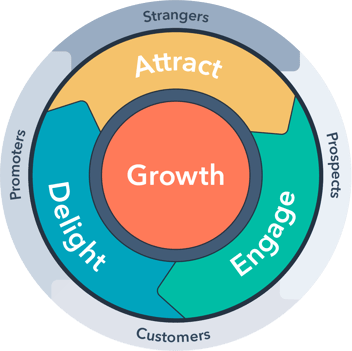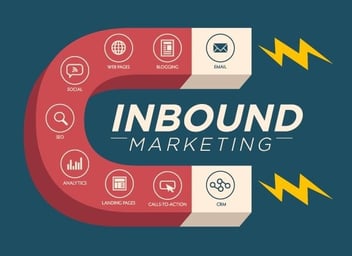Once upon a time, marketers favoured the outbound methodology. Outbound marketing involves putting your brand out there, whether your audience requests it or not.
Outbound covers radio commercials, TV, brochures, catalogues, cold-calling, and advertisements plastered across magazines and billboards.
In summary, outbound is the most traditional – and some would say, intrusive – form of marketing. A company initiates the conversation and transmits its message out to an audience.
The internet has created a newer form of marketing, the inbound approach. And, for the most part, we’ve never looked back – until now.
At Digital Media Stream, we’re always looking ahead. However, grant us permission to look over our shoulder at the olde days of outbound. We want to show you how far we’ve come, and why we prefer inbound.
Outbound Is a One-Way Conversation
Actually, we’re not sure it could even be called conversation. The thing about outbound is that the communication is one-way, and offers little or no chance of engagement.
Inbound, on the other hand, allows the customer to interact with the business and be part of a dialogue. This can be as literal as tweeting a company directly, or subscribing to a company newsletter and opening the doors to further content.
The inbound methodology is based around ‘permission-based’ marketing, whereas outbound methodology works on an ‘interruptive’ basis.
Customers ‘Tune Out’ Outbound Marketing
This ‘interruptive’ style leads to customers turning their heads and ‘tuning out’. In the end, customers tune out and build an immunity to the more in your face methods of outbound. Why? Because it is intrusive and puts its messaging in front of an audience whether the audience wants to engage or not.
With inbound, the marketer is consistently helpful with useful, relevant content. It’s far more organic and builds trust and engagement.
It works too. Inbound is statistically proven to produce better leads: when asked which marketing tactic provides higher quality leads for the sales team, 59% of marketers responded inbound, and only 16% reported outbound (the remaining 26% goes to self-sourced leads).
Outbound Is Often Far More Expensive
There’s no doubt that outbound marketing can be an incredibly pricey endeavour. There are lots of additional costs to the process of outbound, from printing expenses and mailing materials to television and radio coverage.
Inbound marketing costs 62% less per lead than traditional outbound marketing, and, according to industry research, it doesn’t just generate more leads – it generates more revenue, too.
Ultimately, Outbound Feels Too ‘Salesy’
If anything, inbound marketing is marketing for non-marketers. If that didn’t make sense, let us rephrase: inbound doesn’t feel like marketing. Outbound can be too salesy, too pushy, and is too one-sided.
Instead, the alternative of inbound offers valuable content that an audience finds useful, relevant and, most importantly, available.
Inbound is a noted shift away from more traditional forms that have grown stale – people have long cottoned-on to the shortcomings of outbound, the biggest of which is its overly sales-driven feel – think cold calling.
Outbound Is Company-Centric
Whereas inbound is optimised for the customer’s needs, and comes with useful and relevant content, outbound is decidedly company-centric. Its content is written purely for the company, to drive revenue and increase sales.
It often has no value for the customer other than brand awareness. Inbound takes into consideration every step of the customer journey, looking at varied types of content to best serve each stage. By making marketing customer instead of company centric results improve (you can access all of the stats at the end of this blog).
...it’s also impersonal
Nowadays, customers have a well-deserved disdain for impersonal content, and there is nothing more irritating than receiving vague, ‘one size fits all’ content that clearly has nothing to do with the intended recipient. At the click of a mouse, or a tap on the phone outbound marketing can be consigned to junk or blocked forever.
Outbound Is Decision-Based
Outbound marketing works really well for building brand awareness for when customers are at a ‘decision’ stage or ‘buying’ stage of the customer journey. But what about those potential customers who are not at that stage and are still in an ‘awareness’ or ‘research’ stage?
The costs of outbound marketing make this prohibitive. When was the last time you saw a TV advert produced solely for information on a topic or when did you last receive a cold call from a telesales agent who just wanted to give you some free help? We know the likely answer, never.
This is where inbound excels: it allows you to attract potential customers at each stage of the buyer's journey, from those still researching to those ready to make a decision. With inbound you can nurture those leads not ready to buy – with outbound those are not useful. Not ‘had an accident in the last 3 years’ – goodbye….
So in the inbound vs. outbound marketing comparison we feel there can only be one winner. Inbound marketing.
Download our latest eBook to discover 5 Ways You Can Grow Your Business that align with Inbound Marketing techniques:




